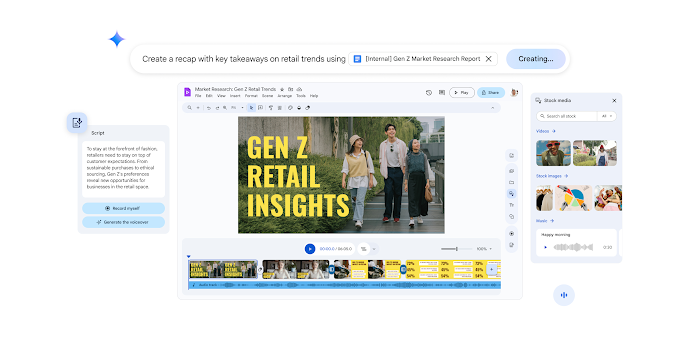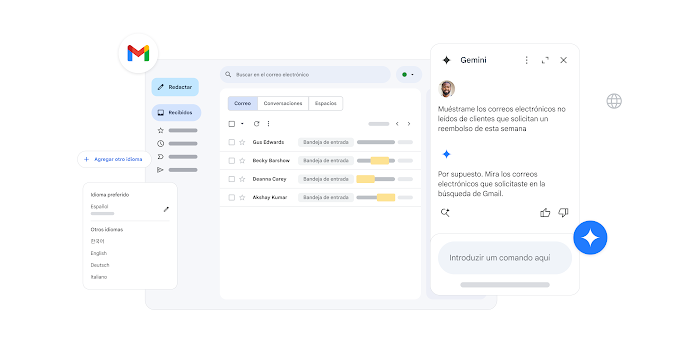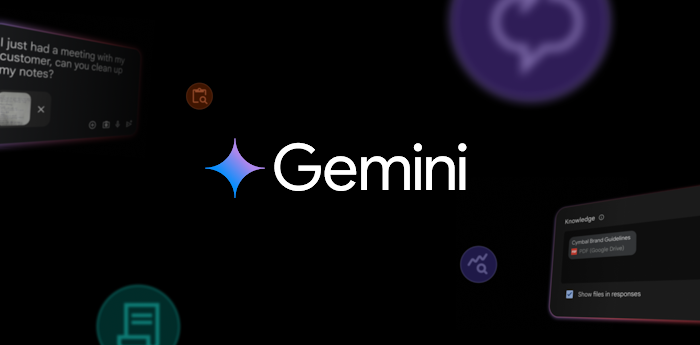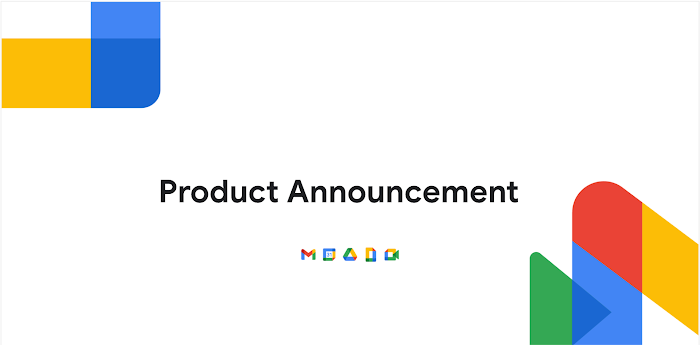Introducing new AI to help people thrive in hybrid work
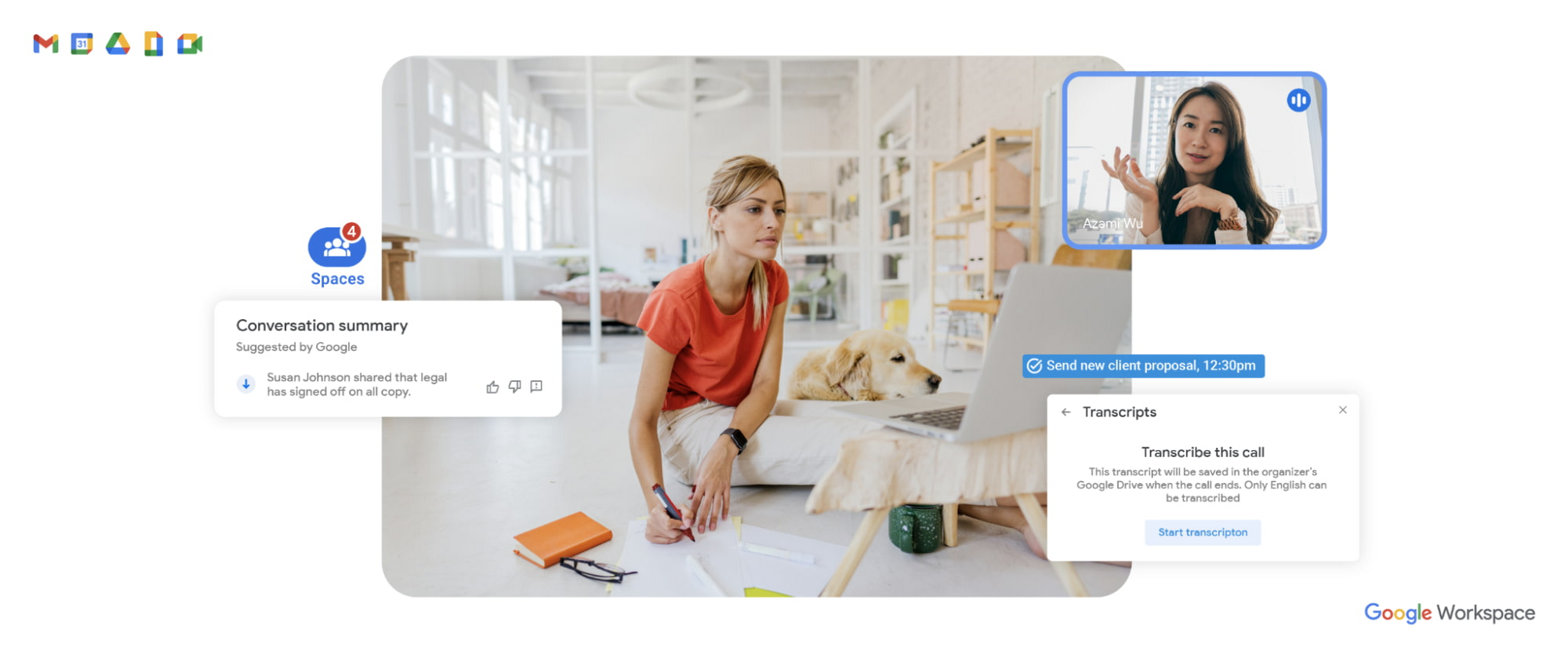
Johanna Voolich Wright
Vice President, Product, Google Workspace
AI-powered innovations in Google Workspace, including summaries in Spaces and Google Meet live sharing and meeting transcripts.
Try Google Workspace at No Cost
Get a business email, all the storage you need, video conferencing, and more.
SIGN UPWe’ve been using machine learning in Google Workspace for some years to help make people’s work day more productive and impactful. Today, we’re announcing new features in Google Workspace that tap into our industry-leading AI to help people thrive and get more done in a hybrid work world.
We hear from customers—and observe in many of our own teams—that staying on top of the vast amount of information flowing across desks and devices can be a challenge. Information overload isn’t a new phenomenon, but many of our customers say that hybrid work has increased the sheer volume of emails, chats, and meetings for their organizations. Our latest AI innovations are designed to help employees bring focus to what matters, collaborate securely, and strengthen human connections across the ways and places work happens.
Helping people focus on what’s important
Using our advancements in natural language processing, we recently introduced automated summaries in Google Docs. In the coming months, we’re extending built-in summaries to Spaces to provide a helpful digest of conversations. Summaries allow you to catch up quickly and easily on what you’ve missed from conversations in Spaces.
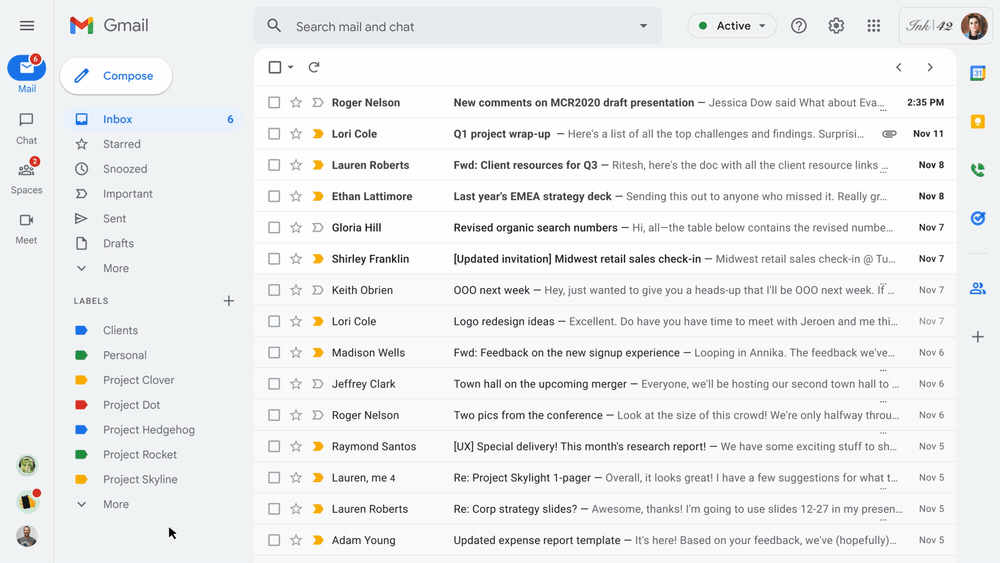

To help boost participation, we’re also introducing automated meeting transcription for Google Meet, allowing those who didn’t attend a meeting to stay in the loop, or for attendees to easily reference the discussion at a later time. We're releasing automated transcription later this year, and meeting summarization next year.
Helping to ensure everyone in the team can be seen and heard
We’re using machine learning to make the meeting experience in Google Meet more immersive and meaningful. In turn, these enhancements can help strengthen human connections in a hybrid work world.
To make it easier for people to connect and share rich content in Google Meet, we’re delivering enhancements to image, sound, and content sharing capabilities later this year. Portrait restore uses Google’s AI to help improve your video quality by addressing issues caused by low light, low quality webcams, or poor network connectivity. This processing automatically happens in the cloud to enhance video quality without impacting device performance.


Historically, lighting has been a challenge in video conferencing but it can make a huge difference in how you show up on screen. Portrait light uses machine learning to simulate studio-quality lighting in your video feed, and you can even adjust the light position and brightness so you’re seen the way you want to be.


De-reverberation, meanwhile, filters out the echoes in spaces with hard surfaces, that can give you conference-room audio quality whether you’re in a basement, a kitchen, or a big empty room.
Live sharing in Google Meet can make hybrid meetings more interactive by synchronizing media and content across participants. Users will be able to share controls and interact directly within the meeting, whether it’s watching an icebreaker video from YouTube or sharing a playlist. Our partners and developers can use our live sharing APIs today to start integrating Meet into their apps.
Helping to ensure hybrid collaboration is secure by design
Collaboration—across time zones, physical locations, and documents—must happen on a secure foundation. Google Workspace is built with a zero-trust approach and comes with enterprise-grade access management, data protection, encryption, and endpoint protections built in. We keep more people safe online than anyone else in the world, and Gmail blocks more than 99.9% of spam and phishing messages from ever reaching users’ inboxes.
Our systems constantly learn from each attempted attack against the billions of users who rely on our products. These insights enable us to anticipate and thwart new attacks by identifying emerging patterns and entry points. Attackers are creative and determined—and with the recent increase in remote and multi-location collaboration, there’s been a trend toward new attack patterns within shared docs. That’s why later this year we’re scaling the phishing and malware protections that guard Gmail to Google Slides, Docs, and Sheets. If a Doc, Sheet, or Slide you’re about to access contains phishing links or malware, you’ll automatically be alerted and guided back to safety.
Investing in people-first collaboration for a hybrid future
At Google, we think AI can meaningfully improve people’s lives and that everyone should have access to its benefits. As hybrid work evolves, we’ll continue to infuse intelligent capabilities across Google Workspace—in the apps familiar to billions of users—so that it’s easier for employees to bring focus to their top priorities, fully participate, and collaborate from anywhere. Unlocking new ways for people to achieve more together is crucial if teams and organizations are going to thrive in the new world of work.
